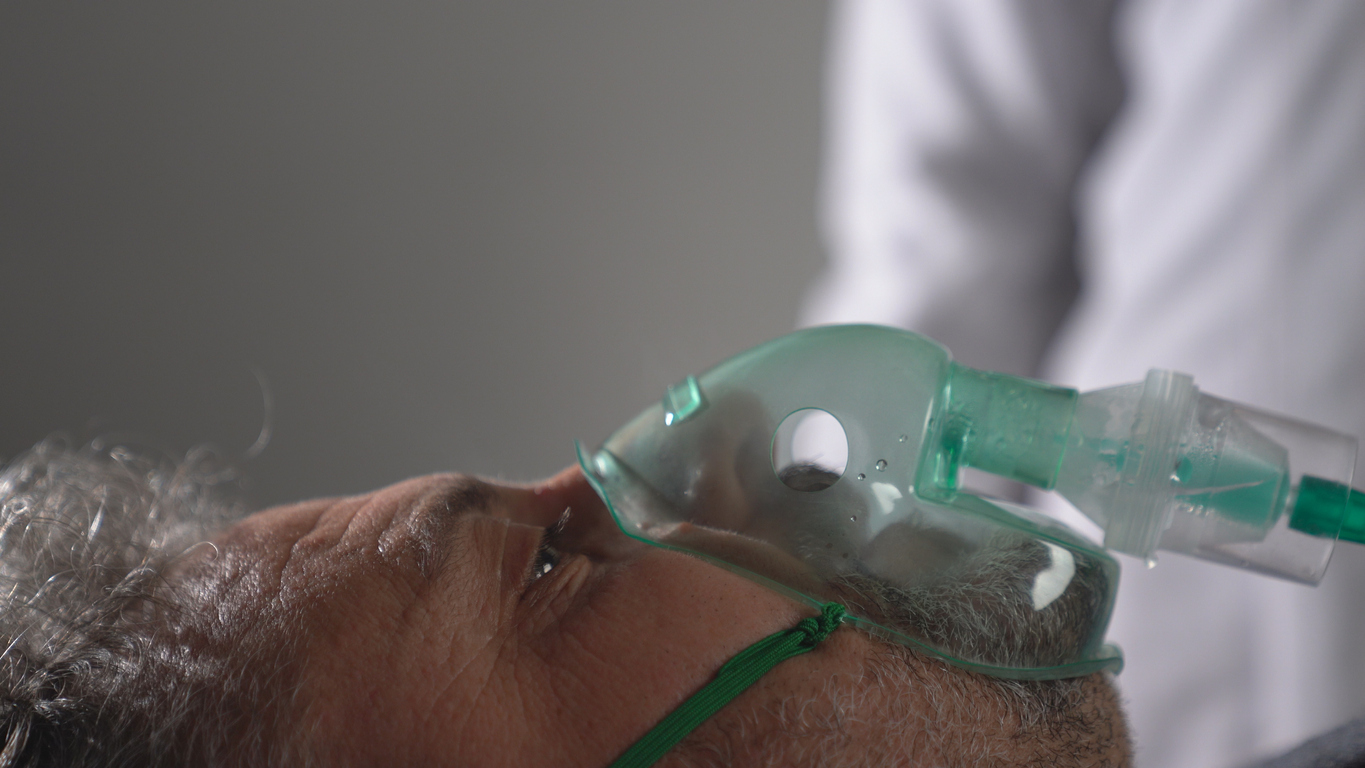 “Functional Medicine determines how and why illness occurs and restores health by addressing the root causes of disease for each individual.” (1)
“Functional Medicine determines how and why illness occurs and restores health by addressing the root causes of disease for each individual.” (1)
COVID-19 Is Forcing Us To Come to Grips With Our Immune Health
Very rarely are we put into a challenging situation that forces us to examine our immune health. Unless we get diagnosed with cancer or an autoimmune disorder, most of us don’t give much thought to our immune system and what it takes to protect us from pathogens we are exposed to on a daily basis. SARS-COV2 (the coronavirus that causes COVID-19) is forcing us to take a closer look at our immune health and whether it is fit and robust enough to fight off this novel coronavirus. Unfortunately, beyond avoiding potential exposures through social distancing, the use of face masks and sanitizer, most of us don’t give much thought about how our metabolic health affects our immune health and how those daily choices we make in our diet and lifestyle directly impact our ability to protect us against this virus. And how certain nutrients and herbs increase our immune system’s ability to protect us against viral infections, including coronaviruses.
Cardiometabolic Disease and Inflammation Pose the Highest Risk
One thing that is clear from the data is that people with pre-existing health conditions are at higher risk of requiring hospitalization from this coronavirus. Generally speaking, it is not the young and healthy population that is being hospitalized for COVID-19. It’s the ones with weakened or challenged immune systems, especially people with poor cardiometabolic health and the elderly, that are succumbing to this virus. The last edition of the CDC’s Morbidity and Mortality Weekly report which was tasked with assessing risk of COVID-19 found that hospitalization rates increase with age and are highest among those with underlying health conditions (2). According to the CDC, almost 90% of hospitalized patients for COVID-19 have pre-existing health conditions, known as “comorbidities”. The most common were hypertension (49.7%), obesity (48.3%), chronic lung disease (34.6%), diabetes mellitus (28.3%), and cardiovascular disease (27.8%).(3) A case series just published in the Journal of the American Medical Association (JAMA) on April 22, 2020, that included 5700 patients hospitalized with COVID-19 in the New York City area found the most common comorbidities were hypertension (56.6%), obesity (41.7%), and diabetes (33.8%) (4). We really shouldn’t be calling these “comorbidities” as if they are unrelated to these hospitalizations. We should be calling these what they actually are: pre-existing inflammatory conditions that predispose to poor outcomes against this coronavirus.
 We Don’t Want To End Up On A Ventilator
We Don’t Want To End Up On A Ventilator
A percentage of those who do require hospitalization and ICU services eventually require the use of a ventilator to keep them alive. Unfortunately, for some reason, COVID-19 patients don’t respond to ventilators as people with typical acute respiratory distress syndrome (ARDS) from other infections do. There is growing interest in why this is the case and what makes this particular coronavirus different than other viral infections but one thing we do know is the vast majority of COVID-19 patients who end up on ventilators don’t ever get off. Data just released two weeks ago from the United Kingdom’s Intensive Care National Audit and Research Center (ICNARC) showed that among patients whose ICU outcome is known, 66.3% of the 1053 patients who required mechanical ventilation died, compared with 19.4% of the 444 patients who required basic respiratory support (5). And a more recent New York hospital study showed almost 90% of patients put on a ventilator don’t make it (6).
Scoring Technique Used To Evaluate Risk Of Progression
There is such a strong association between age, pre-existing conditions and lab findings of these individuals and risk of poor outcomes that the CDC has come out with a scoring technique to evaluate one’s risk of progressing to a critical condition from COVID-1 (7). This scoring system is based on 1) the presence of a pre-existing inflammatory condition, 2) age >60 y/o, 3) low lymphocyte count (important virus-fighting white blood cells) and 4) high levels of lactic dehydrogenase (LDH), an enzyme that is often overlooked in conventional medicine that represents tissue destruction of the liver as well as other organs. Overall, this model was 91% accurate for differentiating between patients who did and did not progress to critical conditions. The negative predictive value (NPV) was 98.5% accurate. This means if you don’t have these criteria identified, there is a 98.5% chance you will not progress to a critical condition (which makes this tool extremely reliable). Why aren’t doctors checking this inexpensive enzyme in routine screening or COVID-19 lab tests? (Note: functional medicine doctors routinely check this enzyme.)
 Connection Between These Scoring Criteria
Connection Between These Scoring Criteria
There is a clear commonality of these 4 criteria used in the scoring system by the CDC in assessing risk of poor outcomes from this virus. This scoring system is based on 1) the presence of a pre-existing inflammatory condition, 2) age >60 y/o, 3) low lymphocyte count (important virus-fighting white blood cells) and 4) high levels of lactic dehydrogenase (LDH). We have already discussed how all of these pre-existing conditions that are risk factors for COVID-19 cause chronic inflammation in the body (8). It is easy to see how chronic inflammation could lead to immune dysregulation in the body and the inability to adapt to new viral challenges as well as the aging process which is associated with poor immune health (9).
Low lymphocytes (white blood cells which are a key part of the adaptive immune system) represent the inability of the immune system to rapidly adapt to new immune threats, particularly viruses. However, low lymphocytes are now being associated with broader disease categories, beyond what is typically associated with immune health, such as heart disease and cancer. Low lymphocytes have been associated with frailty and cardiac disorders such as acute coronary syndrome (10). Low lymphs have also been associated with poor outcomes in colon cancer patients treated with certain medications (11).
LDH is an enzyme most commonly associated with the liver but is also found in other tissues such as the skeletal and cardiac muscle, kidney, liver, lungs and red blood cells. Elevations in this enzyme in the serum, which are easily ordered in routine lab work (but often omitted in routine testing), indicate tissue destruction of one or more of these tissues that contain high amounts of this enzyme. It often indicates liver inflammation but can indicate cell destruction of these other tissues as well which commonly occurs in systemic inflammation (12).
 How Poor Diet Contributes to Coronavirus Risk
How Poor Diet Contributes to Coronavirus Risk
There was an article just published in the NY Times entitled “How Poor Diet Contributes to Coronavirus Risk” (13). In it, the writer interviews Dariush Mozaffarian, MD, dean of the Freidman School of Nutrition Science and Policy at Tufts University. Dr. Mozaffarian says despite our nation’s ability to produce so much food, fewer than one in five American adults is metabolically healthy. He cited a recent national report describing poor diet as “now the leading cause of poor health in the U.S.” and the cause of more than half a million deaths per year (14). According to Dr. Mozaffarian,
“Only 12 percent of Americans are without high blood pressure, high cholesterol, diabetes or pre-diabetes. The statistics are horrifying, but unlike COVID they happened gradually enough that people just shrugged their shoulders. However, beyond age, these are the biggest risk factors for illness and death from COVID-19.”
“The characteristics of what is known as metabolic syndrome — excess fat around the middle, hypertension, high blood sugar, high triglycerides and a poor cholesterol profile — suppress the immune system and increase the risk of infections, pneumonia and cancers. They’re all associated with low-grade, body-wide inflammation”, Dr. Mozaffarian explained, “and COVID kills by causing an overwhelming inflammatory response that disables the body’s ability to fight off pathogens.”
Poor Diet is the Leading Cause of Poor Health
Epidemiologists and researchers are recognizing the importance of nutrition in preventing poor health and that health starts with what you put in your mouth. More doctors are adopting the perspective that food is medicine and the strong belief that what you eat today affects your health tomorrow (15). A recent national report describes poor diet as “now the leading cause of poor health in the U.S.” and the cause of more than half a million deaths per year (about 10 times the number of deaths from COVID-19) (16).
The March 2020 Report of the 50th Anniversary of the White House Conference on Food, Nutrition, and Health highlighted as one of the primary tasks to improve health of Americans:
“Equip health professionals with effective nutrition interventions and better nutrition knowledge. With diet-related disease being the number one cause of poor health in America, nutrition should be among the top priorities in our healthcare system. Health providers need better nutrition training and effective, evidence-based nutrition interventions, tailored to specific populations, that can improve diet-related health outcomes and reduce healthcare costs.”(17)
 Good Immune Health is Dependent On Good Metabolic Health
Good Immune Health is Dependent On Good Metabolic Health
There is a clear message here: if you have good metabolic health, your immune system will likely be able to protect you against this virus (as well as any new one that comes along). Poor metabolic health is the immunity-impairing factor underlying hypertension, cardiovascular disease, Type 2 diabetes, obesity and chronic lung disease. Poor metabolic health leads to chronic inflammation and poor immune health. It is really poor metabolic health that is leaving so many nutritionally-compromised Americans especially vulnerable to the lethal coronavirus now all but paralyzing the country. Add to that chronic stress, poor sleep and exercise habits and toxic exposures through our food chain and tap water that has become part of the modern American lifestyle and you have the perfect storm for COVID-19-related disaster.
Prevalence Of Coronavirus Infection Still Unknown
While we still don’t know the prevalence of positive coronavirus infection in the U.S. (or even northern California), if you think COVID-19 couldn’t affect you or your family, think again. A recent New York hospital study on pregnant women being admitted for delivery showed the prevalence of SARS-CoV2 positive women at almost 14% (18). Closer to home, two new studies here in California (one in northern CA, one in southern CA) indicate a much higher prevalence than previously thought. The Nor Cal study showed the population prevalence of positive COVID-19 antibodies in Santa Clara ranged from roughly 2.5% to 4%, which was 50-85 times more than the number of confirmed cases (and previously believed) (19). The So Cal study done in Los Angeles County estimated that 2.8% to 5.6% of the county’s adult population carried antibodies to the coronavirus (slightly higher than the Nor Cal study). Given that there are 10.4 million people in Los Angeles County, this translates to somewhere between 290,000 to 580,000 people being likely infected (20).
 The Continuum of Health and Disease
The Continuum of Health and Disease
People do not develop poor health overnight. Poor health develops over years of living a life with unhealthy habits, such as poor diet, poor sleep, sedentary lifestyle, toxic exposures and chronic stress. Your health is a reflection of all these aspects of your life and how your genes (inherited from your ancestors) are able to cope with all these dietary and lifestyle habits and exposures based largely on your daily decisions (but not always). The conventional medicine model has brain-washed us into thinking we are healthy until we are diagnosed with a disease and only then do we have a “problem that needs to be fixed”. When in actuality, these “problems” have been brewing for years and no one has taken the time to properly assess where you are on the spectrum of health and disease because most medical doctors do not believe that is their responsibility. They are focused on diagnosing your disease and if you don’t have one, most are not well-equipped to offer much help or guidance on health promotion or disease prevention. A report published in the Journal of the Association of American Medical Colleges found that “…frequent exposure to disease prevention and health promotion…may not sufficiently prepare students to deliver health-promoting services confidently.” (21)
A Need for a Proactive, Predictive Model of Medicine
What we need is a model of medicine that is more proactive and predictive, rather than reactive and acute-based (22). We need a model of care that is able to assess different aspects of a person’s life and interpret laboratory testing through a preventative model of healthcare that compares your lab results to “ideal” health, rather than a range developed to diagnose “disease”. We need access to laboratory testing that looks at different aspects of health, including metabolic health, gut health, hormonal health and immune health and is able to tell us where we are on this continuum of health and disease and where we are likely headed if we don’t make any changes in our diet and lifestyle.
 A Need for Functional Medicine
A Need for Functional Medicine
This is exactly what Functional medicine is all about: identifying where you are on this spectrum. We do this a variety of ways but one of the tools that we often use is functional lab testing that enables us to identify imbalances taking place well before the point when most people would go see their doctor. These lab tests allow us to better assess your risk of developing a health problem (or in cases of chronic disease, they allow us to better manage these conditions by paying attention to functional lab markers that inform us of risk of progression). This is not a new concept but has been ignored and ostracized by conventional medicine and its close allies, pharmaceutical companies, which have the primary aim of controlling the discussion of illness via “diagnosis” and “treatment” (with pharmaceutical drugs, of course) (23). In some cases, the pharmaceutical industry plays a role in defining illness (24).
At its core, Functional medicine is about promoting and maintaining health and improving chronic health conditions through diet, nutritional and lifestyle change. Lifestyle change includes changing habits related to sleep, physical activity, stress management and avoidance of environmental toxins. These choices we make on a daily basis regarding what we put into our bodies, what we do with our bodies and what we expose ourselves to are the primary determinants in our ability to live a long, healthy, vibrant life into old age or risk of developing a chronic health condition or worse, succumbing to a virus that can have fatal consequences.
References
- https://www.ifm.org/functional-medicine/
- https://www.cdc.gov/mmwr/volumes/69/wr/mm6915e3.htm?s_cid=mm6915e3_w
- https://www.cdc.gov/mmwr/volumes/69/wr/mm6915e3.htm?s_cid=mm6915e3_w
- https://jamanetwork.com/journals/jama/fullarticle/2765184
- https://www.medscape.com/viewarticle/928605?nlid=135023_5402&src=wnl_dne_200414_mscpedit&uac=165992DR&impID=2345921&faf=1
- https://www.livescience.com/coronavirus-ventilator-deaths-new-york.html
- https://www.medscape.com/viewarticle/928765?nlid=135061_5402&src=wnl_dne_200417_mscpedit&uac=165992DR&impID=2349764&faf=1
- https://www.ncbi.nlm.nih.gov/pubmed/29370858
- https://www.ncbi.nlm.nih.gov/pubmed/27712080
- https://www.ncbi.nlm.nih.gov/pubmed/31959430
- https://www.ncbi.nlm.nih.gov/pubmed/28707088
- https://nyaspubs.onlinelibrary.wiley.com/doi/abs/10.1111/j.1749-6632.1961.tb35584.x
- https://www.nytimes.com/2020/04/20/well/eat/coronavirus-diet-metabolic-health.html?auth=login-email&login=email
- https://www.politico.com/f/?id=00000171-0e13-d270-a773-6f5ff7ea0000
- https://jamanetwork.com/journals/jamainternalmedicine/article-abstract/2730764
- https://www.politico.com/f/?id=00000171-0e13-d270-a773-6f5ff7ea0000
- https://www.politico.com/f/?id=00000171-0e13-d270-a773-6f5ff7ea0000
- https://www.nejm.org/doi/full/10.1056/NEJMc2009316
- https://www.medrxiv.org/content/10.1101/2020.04.14.20062463v1
- http://publichealth.lacounty.gov/phcommon/public/media/mediapubhpdetail.cfm?prid=2328
- https://journals.lww.com/academicmedicine/Pages/aboutthejournal.aspx
- https://www.marsdd.com/news/transforming-health-shifting-from-reactive-to-proactive-and-predictive-care/
- https://www.ncbi.nlm.nih.gov/pmc/articles/PMC1369125/
- https://journalofethics.ama-assn.org/article/pharmaceutical-industrys-role-defining-illness/2011-12